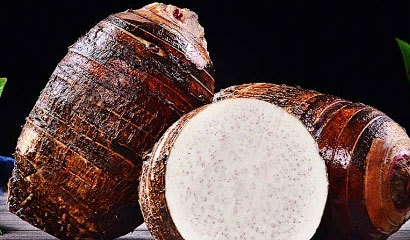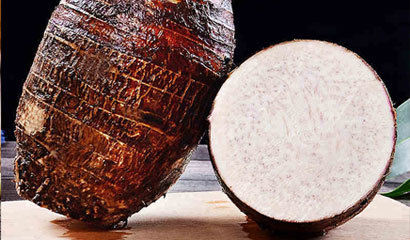
BLOG
Local Varieties of Characteristic Crops in Guangxi-Lipu Taro
Lipu taro has a long history of cultivation in Lipu. According to written records, it began in the forty-eight years of Kangxi in the Qing Dynasty and has a history of more than 340 years. At first, Fujian people brought taro into Lipu County, first planted it in the area of Guandi Temple in the west of the county seat, and radiated to the surrounding areas. Under the special geographical and natural conditions of Lipu County, affected by the environmental microclimate, gradually formed a collection of color, Fragrance and taste in one of the local famous and special products, the quality is far better than that of taro produced in other places, as early as in the surrounding counties, the betel taro produced in Lipu had the term "Lipu taro. According to the records of "Lipu Chronicles" in the third year of the Republic of China, "The old Zhiyun: there are more than ten jin, but now there is nothing. But the one that comes out in front of the Guandi Temple outside the city is better. The cut-out shows the betel nut pattern, which is called betel nut taro". "The grain is brown and dense, the powder is loose but not sticky, and it is fragrant. 2017 china top 100 brands of agricultural products! The brand value is 1.068 billion yuan; in 2015, it was awarded the geographical indication product of the Ministry of Agriculture, and in 2008 it was rated as "China Famous Brand Product"; in 2005, it was awarded the geographical indication product of the State Administration of Quality Supervision, in 2004, it was awarded the pollution-free agricultural product of the Ministry of Agriculture, and in 2001 It was awarded the famous brand product of China Agricultural Expo, and was awarded the origin certification trademark of the State Administration for Industry and Commerce in 2000.
Main characteristics: Lipu taro species (covovocasia antingwoym sehott) Kui taro Areca taro is an excellent variety, belonging to the Araceae (Araceae) herbaceous plant, which is included in the list of vegetable crops in cultivation and is the leader in taro products. The growth period of Lipu taro is 220-250 days, the plant height is about 1.5 meters, the division capacity is strong, the bulb is large, the mother taro is spindle-shaped, the middle is large, the two ends are small, the length (longitudinal stem) is about 25-30cm, the thickness (transverse stem) is 13-18cm, the general weight is 1-2kg, the maximum weight is 6kg, the bulb epidermis is yellow brown, the scales are dark brown, the internodes are dense, the flesh color is gray. Each plant has more than 10 taro, which is slender, with a large head and a small tail. The largest taro weighs 1kg.
Now the main use: the raw materials for making snacks and delicacies can be boiled or braised with meat, and can also be sliced into hot pot for scalding, as well as making minced taro balls, braised taro pork, stir-fried taro chips, taro spareribs, etc. Lipu taro pork is the most distinctive.
Production: planting area and distribution of about 25460 mu. The yield per mu is 2000kg, and the output value per mu is 8000 yuan.






